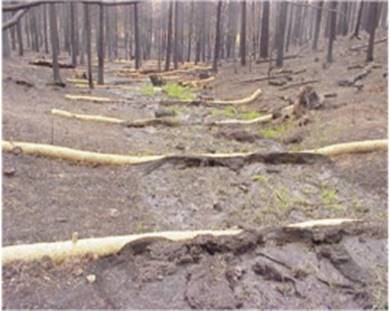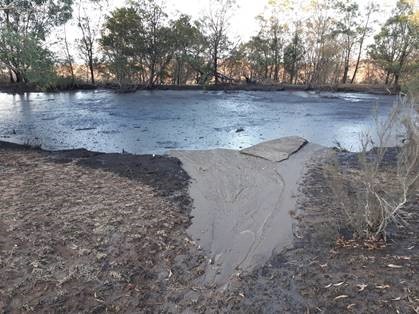Managing erosion after bushfires
March 2020
Andy Taylor, Senior Natural Resource Management Advisor
The recent southern fires have had a significant impact on our natural environments. Fires impact the whole landscape causing erosion, loss of habitat, reduced water quality, damaged pastures, lost farm productivity and damage to infrastructure (roads, fences and dams).


Loss of vegetation and groundcover leads to increased erosive potential during heavy rain events as there is no material left to slow the movement of water.
As good rainfalls return we are witnessing erosion across the landscape, but not just in the gullies, where you might normally expect to see it. Erosion is happening across all areas of the fire ground and even in unburnt areas as high rates of runoff lead to larger volumes of water accumulating and applying greater force on our soils.
The full extent of the impact will not be known until landscapes have had the opportunity to recover and we can see what they look like, but there are some things that land managers can be doing in the meantime to help protect landscapes from erosive forces, like wind and rain, and allow them some time to recover.
The Palerang team recently presented at a post fire erosion management workshop hosted by the Capital Region Small Farms Network. The workshop covered some of the key concepts and actions to do with post fire landscape management:
- The scale of the event means that you need to focus your efforts on key areas.
- Three big things to look for when identifying priority areas on your property are slope, soil type and catchment size.
- Identifying fire intensity in your landscape and the impact that is likely to have on the recovery. Areas that burnt at a lower intensity, i.e. barer paddocks are likely to recover quicker than those that burnt at a higher intensity i.e. woodlands and forests.
- The importance of landscape monitoring, paying long term attention to those identified priority areas, particularly after major rain events. You need to be patient and give the landscape some time to recover before you make big management decisions.
- Restoring ground cover as early as possible (baring the above in mind) and allowing it to establish and seed down before returning stock to the area. Land managers need to have a knowledge of what was on the ground pre fire so they don’t put something down that will change the state of the site.
- Installation of sediment traps in high risk areas, to stop the dispersal of ash, debris and soil in post fire rain events. These can be made of straw/hay bales, specialised erosion control products or any organic material (i.e. fallen timber).
Contact your nearest Local Land Services office and ask to speak to the Natural Resources Management team for more information about landscape recovery and erosion management.
Click on the following link if you have questions about the management of Native Vegetation post fire.
Visit the NSW Government’s Bushfire Hub for more details on post fire support and services.